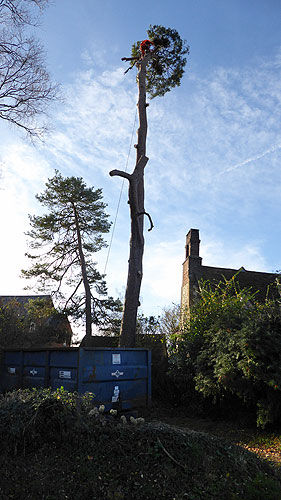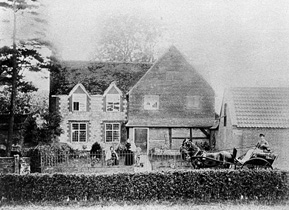
 On November 27th 2016 there were big changes at Sylvesters when the two Scots Pines were cut down due to safety concerns. A fungus, phaeolus schweinitzii, which causes rot on the roots had been discovered, and this put both houses at risk from the trees, which could fall without warning.
On November 27th 2016 there were big changes at Sylvesters when the two Scots Pines were cut down due to safety concerns. A fungus, phaeolus schweinitzii, which causes rot on the roots had been discovered, and this put both houses at risk from the trees, which could fall without warning.The trees, whose Latin name is, interestingly, “Pinus sylvestris”, were quite old as the photographs below show. They can live to between 150 and 300 years.
A persistent theme in the folklore of Scots Pine is their use as markers in the landscape. In the Highlands there is a recurrent theme that they were used to mark burial places of warriors, heroes and chieftains. In areas further south where the sight of Scots Pine may have been more unusual and their use would have stood out more, they can be seen to mark ancient cairns, trackways and crossroads. In England they were commonly used to mark not only the drove roads themselves, but also the perimeters of meadows on which passing drovers and their herds could spend the night. There is also the possibly more fanciful suggestion that Scots Pines were planted in England by Jacobite farmers or sympathisers.
“Sylvesters” in its present shape dates back to 1674, which is right in the Jacobite ‘era’, so could the trees have replaced originals planted around that time, and given their name to the house? We shall probably never know!
The photograph below, left, from the Sale Catalogue of the Froyle Estate in 1915, shows that the trees were pretty tall then, while the other picture, taken in the 1880s, shows the Knight family outside “Sylvesters”, with one of the trees just visible to the left, which is still some considerable height. In fact, they seem to have not grown much more in the past 100 years!
 |
 |